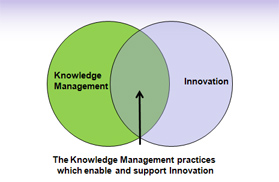 Urinals. Do you spend much time looking at them?
Urinals. Do you spend much time looking at them?
This is just a guess, but for half of you, I’m assuming that the answer is “no”. The other half of you are wondering where I’m going with this line of enquiry.
If you have had the pleasure of using the urinals at Schiphol Airport in Amsterdam, you will have noticed that each one is embellished with a lifelike image of a fly, under the glaze – just near the drain. Initially I dismissed this as merely an example of quirky humour from a Dutch sanitary-ware manufacturer, but I was too hasty. Apparently, since incorporating the fly into their urinals, airports and other public places have noticed a decrease in the amount of cleaning required. Some of these have improved to the extent that they have saved money by reducing the number of cleaning shifts. If you haven’t figured out the link between the fly and the cost reduction, ask any small boy!
All of this got me thinking about how on-target we are in the way we exchange knowledge, good practices, worst practices and stories. Despite our best efforts, do people sometimes miss the mark when it comes to knowledge exchange?
As knowledge professionals, we work hard to use processes and social technologies to bring people together collaboratively. On some precious occasions, we get to design and facilitate face-to-face knowledge-sharing events. Occasionally, we even get to work on leadership behaviours and organisational design.
In all of these worthy activities, we sometimes forget that knowledge management can also help groups of people to agree upon and describe their practices – and hence connect and share more efficiently because they have negotiated a common language.
Here’s an illustration. In KM circles, we have talked for years about the value of nurturing communities of practice, and rightly so. However, if we were to turn our “Community of Practice toolkits” out onto the table, the majority of our tools play into the notion of Community: role descriptions and training programmes for leaders and facilitators, templates for community charters, designs for launch events, no end of technology options for social collaboration and document management.
But what about the Practice bit? Do we have anything in our toolkits to offer groups of professionals who want to agree upon “what’s important” and describe “what good looks like”? Yes, we can provide wikis where people can discuss and build glossaries, definitions and reference material, but that’s a platform, rather than a process.
I’m advocating that as Knowledge Management professionals, we should be able to offer any group a simple process for describing their practices qualitatively, thereby enhancing their knowledge-sharing. That could involve the creation of a self-assessment tool (maturity model) – or perhaps a knowledge asset which helps others to navigate through a distillation of past learning, current good practice, examples and key contacts.
That’s more than installing a wiki, a Drupal community or a set of SharePoint libraries. It requires us to roll up our sleeves and engage with the subject experts and practitioners. It involves us in helping them to agree and describe their practice in an accessible way. By helping them to produce a common model of the practices which make up their functional area, they will be able to target their knowledge-sharing far more precisely, and hence get more value from KM tools and techniques.
Or to put it another way - if our knowledge workers have something more clearly defined to aim at, then we’ll have to spend less time clearing up after them.


 I had the pleasure last week of spending two days in Bangalore with
I had the pleasure last week of spending two days in Bangalore with  I must also take the opportunity to thank
I must also take the opportunity to thank 
 I picked up a copy of
I picked up a copy of 
